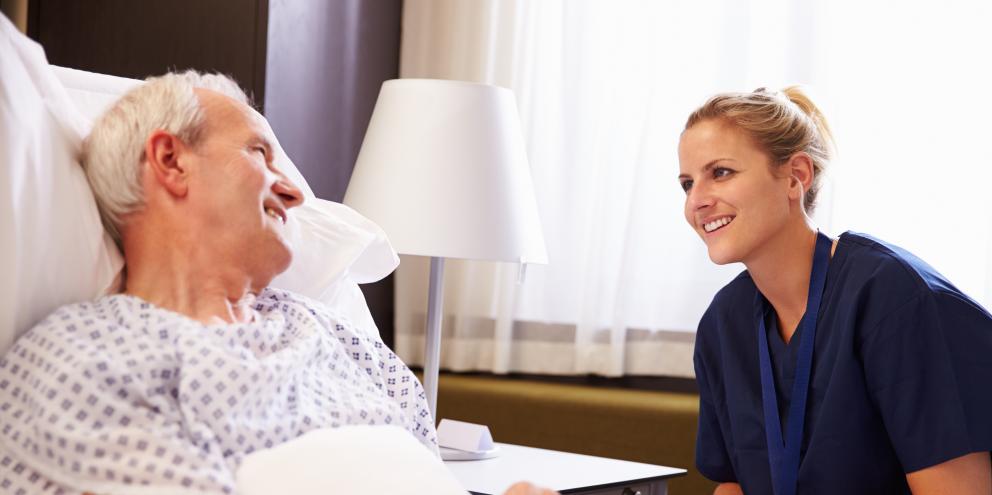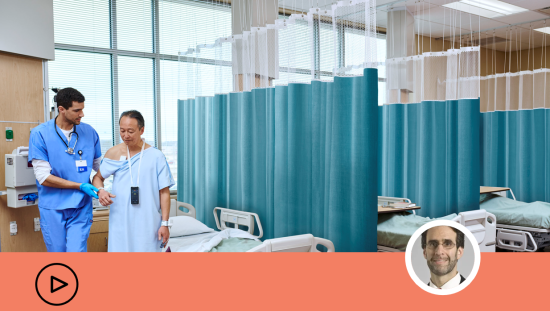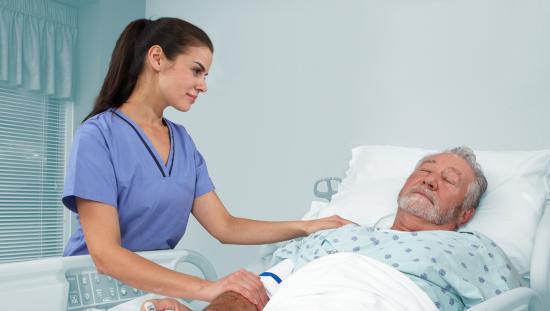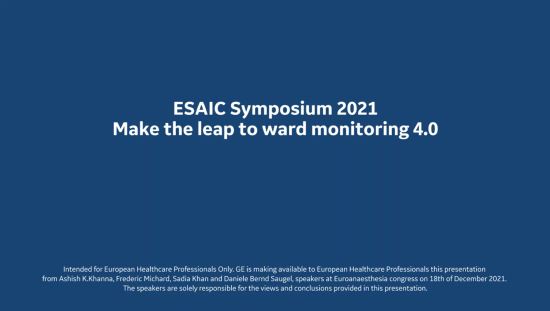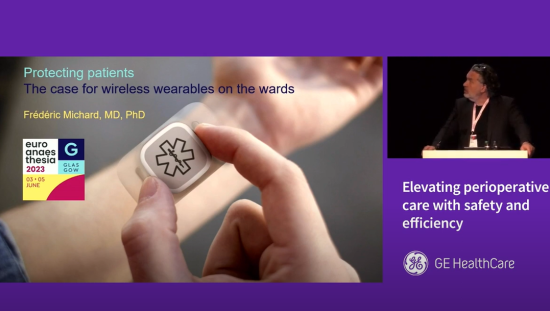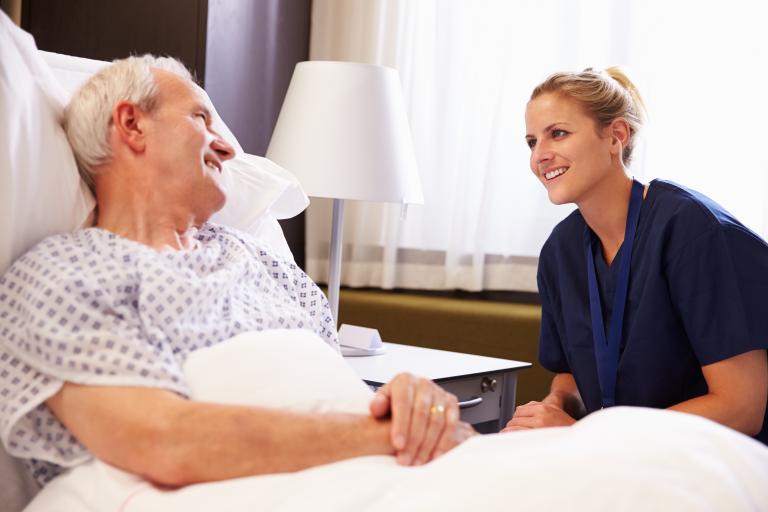
15% of patients were identified as deteriorating up to 2 hours before planned observations
West Middlesex University Hospital, part of Chelsea and Westminster Hospital NHS Foundation Trust, is a busy West London district general hospital providing outstanding care to a patient community of over 1.5 million people. Like all busy acute hospitals, it has a large group of patients who are too sick for general wards, but not quite unwell enough for critical care.
Ward patients may have been stepped down from Intensive Care (ICU), Coronary Care (CCU), or are recovering following surgery. However, they still represent a risk of deterioration or having adverse reactions. The monitoring of their vital signs such as pulse rate, blood pressure, respiratory rate and oxygen saturation is currently undertaken manually 3-4 times a day by a nurse or healthcare assistant. This is time intensive, can be paper based and creates wide windows of unmonitored care. Can they be more efficiently monitored?
Detecting patient deterioration quickly on the hospital ward
Dr. Sadia Khan, Service Director for Cardiology & Respiratory Medicine & Consultant Cardiologist at West Middlesex University Hospital and Honorary Senior Lecturer at Imperial College London, and her team looked to explore if wearable sensors that provide continuous monitoring can detect patient deterioration quicker than current methods.
Trialing continuous monitoring technology from GE Healthcare, they looked to investigate how continuous monitoring of medical ward patients using wireless sensors and digital technologies can be done to potentially help them improve quality of care, patient safety and the patient experience.
“The idea of physiological measurement to track and trigger is not just about early detection but also about what you can do with that information to help create better outcomes for your patients. There is a raft of sensor technologies, especially in the consumer space, but none were answering the questions about hard outcomes and patient and staff experiences. One of the first steps we undertook in our study was a systematic review of existing, mixed-quality studies and literature up to 2019 about continuous monitoring. It showed clear trends of reducing the length of patient hospital stays. However, there was also a big data gap in what we consider important in terms of wider quality and experience outcomes,” states Dr. Sadia Khan.
Historical and recent studies into continuous monitoring that were reviewed by Dr Khan’s team clearly indicated the benefits of continuous ward monitoring in theory and practice. For example, in a 2014 UK national audit of adult in-hospital cardiac arrests, it showed that more than half (57%) occurred on the wards and only 5% in the ICU[1]. Yet most patients do not suddenly deteriorate - vital signs show abnormal or trending towards an abnormal range before a cardiac arrest or ICU transfer[2]. It is, however, the reliance on manual spot checks to monitor ward patients that can be linked to an increase in patient deterioration and safety issues. Clinicians may only suddenly notice issues because spot checks are usually done on a 4–6-hour interval.[3]
Reducing clinical risk and alleviating heavy workloads
Next, as part of the Imperial College London validation study, the team looked at whether sensors work and if they measure what they say they can. The evidence was highly positive. Pulse rate data showed correlation within 2 bpm, and comparisons with other parameters reflected the same levels of accuracy.
Understanding the impact of outcomes came next, such as speed of patient deterioration and detection of sepsis. Results from the general medicine ward evidenced that using sensors to generate alerts detected deterioration on average about 2 hours before the nurses planned to do observation rounds and in 15% of patients.
In addition to quantitative evaluation of the continuous monitoring, qualitative feedback was also gained from 90% of the patient sample. Overwhelmingly, the feedback was that patients liked the devices, found them comfortable and considered them the future of monitoring. There was a clear feeling of ‘security’ and ‘reassurance’ in the patient population and that the hospital was focused on their care and wellbeing by using the devices. The patient feedback also showed concerns about staff, with a lot of detail in the feedback about how hard the nurses were working and that if the devices helped alleviate their burden that would be a positive aspect of the new technology.
Hospital staff were also part of the qualitative feedback interviews with the sample ranging in roles and disciplines. There were common and overlapping themes to the patient responses such as safety and help to improve workloads, plus clear focus on better outcomes and time savings than current manual monitoring.
Improving patient care and quality outcomes
“General medical and surgical wards carry the greatest burden of patients in the hospital environment and because of this, they also carry the greatest risk of undetected patient deterioration,” states Dr. Khan.
“Our early-stage study into monitoring patients with wearable wireless digital sensors was a first step in validating the benefits of continuous monitoring on our wards. Our work has shown great opportunities of having digital alerts automating vital sign observations by catching deterioration up to two hours earlier than nurse observation rounds. Furthermore, continuous digital patient monitoring created feelings of ‘greater security’ and ‘confidence’ by patients and staff which are valuable for cultural morale and patient wellbeing.”
Looking to the future of continuous monitoring
“We’re already working on our next studies to understand the benefits of sensors and digital monitoring technologies, especially in today’s Covid-era. There are real anticipated benefits, especially in busy winter seasons and the on-going coronavirus situation. These technologies can help us provide personalised care for many more patients at the same time, as well as keeping ourselves safe by monitoring remotely,” continues Dr. Khan.
“Being able to continuously monitor patients, day and night, without introducing any additional workload to nurses and deliver improved patient safety is an exciting prospect for today’s healthcare environment. It has the potential to reduce the length of hospital stays and the number of people being transferred to ICU, while also freeing up valuable ICU hospital beds for those that need mechanical ventilation. It will help enhance the human element of today’s patient care by automating some of the most time-consuming data gathering processes,” concludes Dr. Khan.
References
[1] Nolan JP, Soar J, Smith GB, et al. (2014) Incidence and outcome of in-hospital cardiac arrest in the United Kingdom national cardiac arrest audit. Resuscitation, 2014; 85:987-92.
[2] Churpek MM, Yuen TC, Huber MT, et al. (2012) Predicting cardiac arrest on the wards. A nested case-control study. Chest, 141:1170-1176.
[3] Michard, et al., Protecting ward patients. ICU Management & Practice; Vol 19 – Issue 1 (2019).
West Middlesex University Hospital is part of Chelsea and Westminster Hospital NHS Foundation Trust – a GE customer. The statements described in this article are based on their own opinions and on results that were achieved in the customer's unique setting. Since there is no "typical" hospital and many variables exist (i.e. hospital an size, case mix, etc.) there can be no guarantee that other customers will achieve the same results.
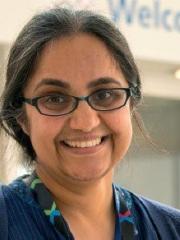
Dr. Sadia Khan
Consultant Cardiologist with an interest in heart failure. She is the Service lead for both cardiology and respiratory medicine. As part of her clinical role she has helped set up community heart failure services and improved care for heart failure patients across the Trust and in the 3 boroughs local to West Middlesex University Hospital.
Monitoring the Unmonitored
Watch our webinars on monitoring the unmonitored patients in general ward.

